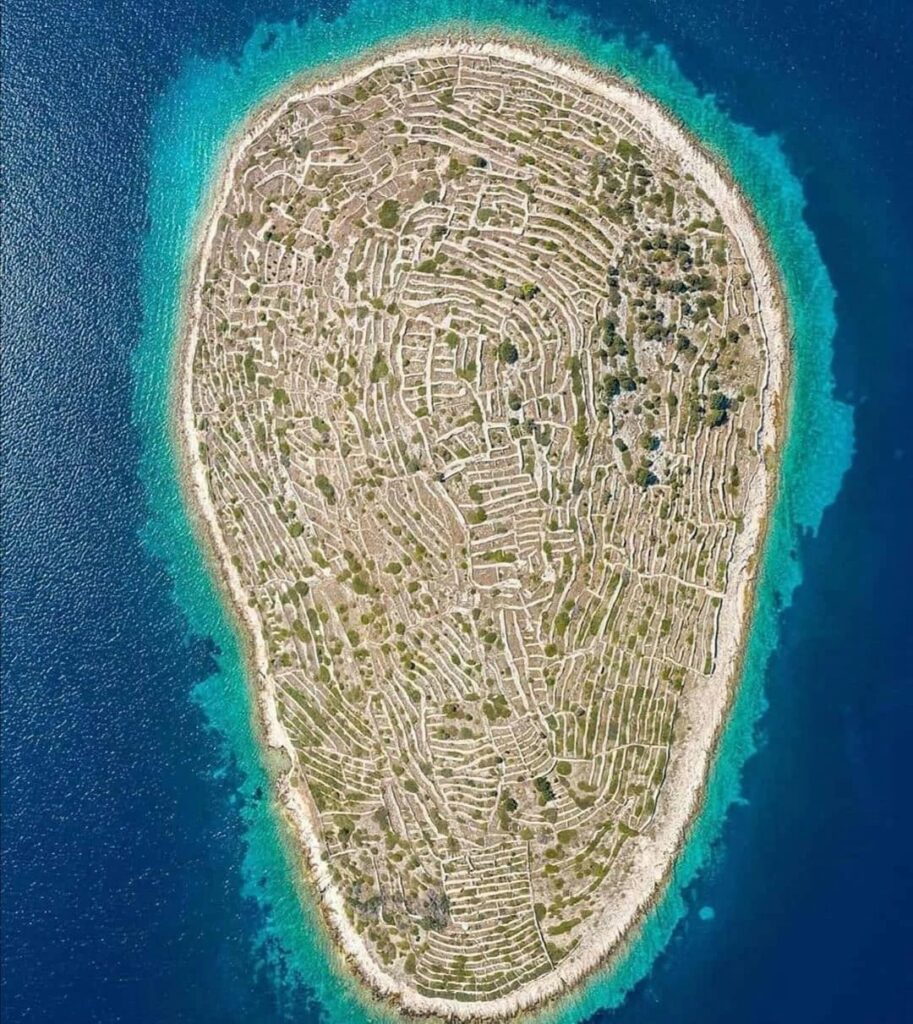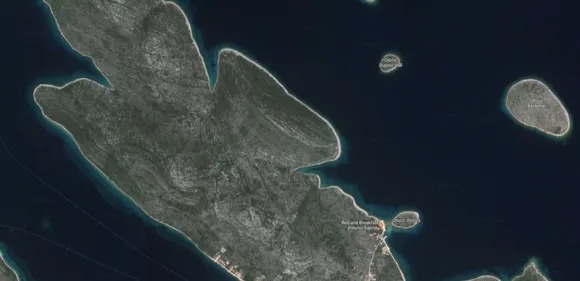
Without reaching the Greek profusion, Croatia has 79 large islands, more than 500 smaller islets and another 642 tiny rocks covering an area of about 3,300 square kilometers.
One such small island is Baljenac (or Bavljenac), located off the Dalmatian coast in the south of the country and forming part of the Šibenik archipelago.
It barely has 0.14 square kilometers of surface and a length of coast of 1,431 meters. It is uninhabited, but Croatia recently requested its inclusion in UNESCO’s list of World Heritage sites.

The reason is that the whole island is covered by an ancient network of low stone walls, totaling some 23 kilometres in length, forming a sort of grid that makes it look like a human fingerprint from above.
The walls are constructed without any type of mortar or cement, simply piling up and fitting the stones one on top of another. They were erected to separate the fields, vineyards and olive groves, as well as to protect them from the wind.

The builders were the inhabitants of the nearby island of Kaprije, who have been exploiting the area since ancient times and continue to do so. In Kaprije, which today has a population of just 150 and in which cars are forbidden, and other islands of the archipelago there are zones covered by such walls, but Baljenac stands out precisely for presenting the highest concentration of them.
Baljenac has a kilometre and a half of walls per hectare, while the next in terms of density would be the islands of Zut (200 metres per hectare) and Kornati (100 metres per hectare).
s for the period, it is believed that they were built during the nineteenth century, although it is possible that many are earlier. Altogether, adding up all the Croatian islands in the area, it is estimated that some 300 farmers were able to build 106 kilometres of walls over a total area of 12 square kilometres.

Both Baljenac and Kaprije and other islands in the archipelago served as a refuge for Christians during the Ottoman conquest in the sixteenth and seventeenth centuries, so it is possible that the walls began to rise already at that time.
Sources: Croatia Week / Total Croatia News / Like Croatia

Leave a Reply